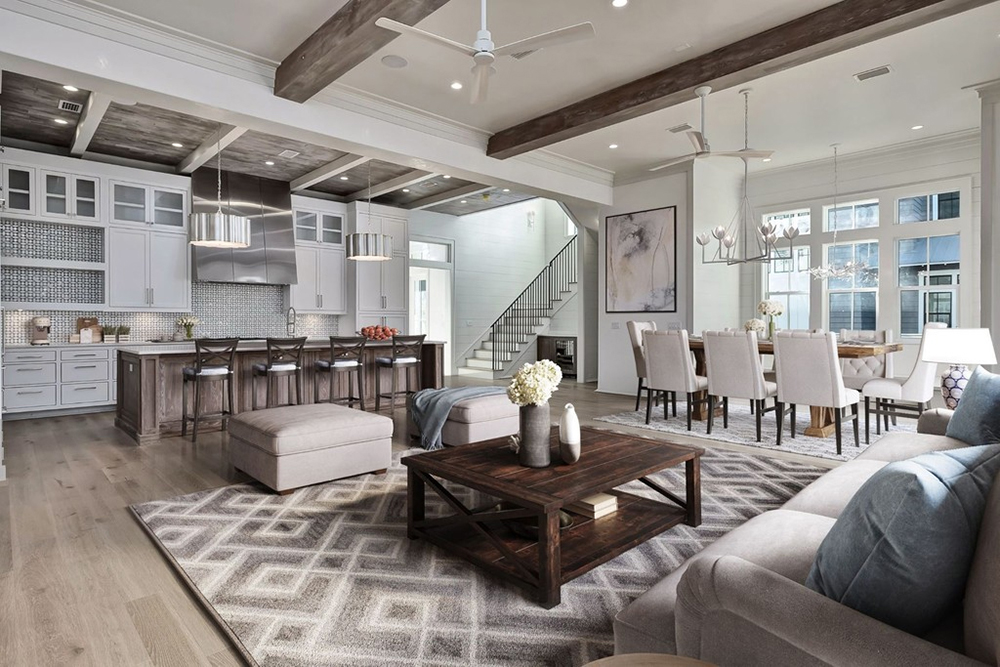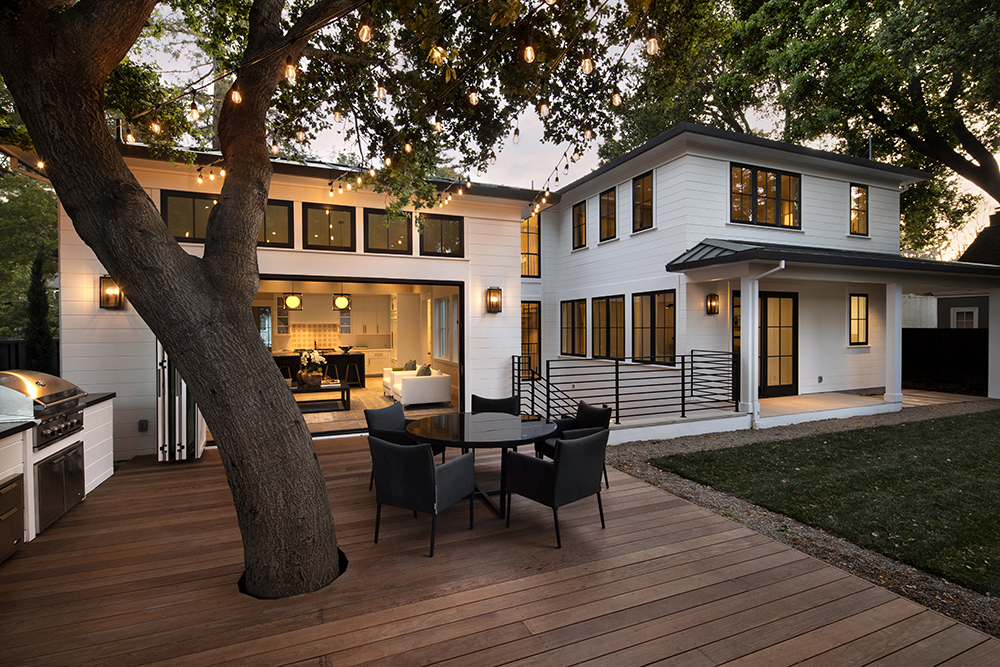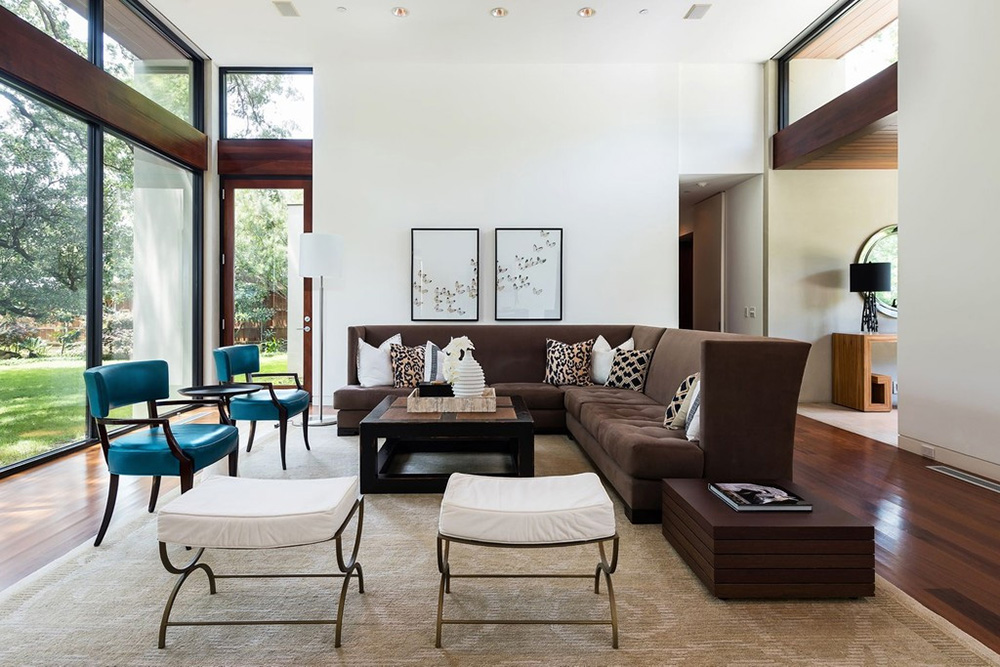The styles you should know about to better advise your clients
All great designs start somewhere. Tastes that seem universal across global luxury markets are inevitably inspired by unique, trendy micro markets. So what types of interior decoration should you be paying attention to as you advise your clients and prepare your next listing?
Three leading agents share their insights based on the neighborhoods where they work, live, and list.
Going nautical on the Emerald Coast
 Scenic Sotheby’s International Realty
Scenic Sotheby’s International Realty
Seaside luxury living has always had a signature look, but the upscale beach community of Florida’s Emerald Coast has its own understated flair.
“Our market is a very intentional play on the Hamptons’ refined luxury, but a southern take,” says Blake Jones, Owner and Partner of the Carroll Jones Beckman Team with Scenic Sotheby’s International Realty. “Interiors are unadorned yet comfortable, encapsulating the feeling of true luxury in a non-pretentious way.”
Rustic woods and linens come together with clean, sleek lines to create an interplay of old and new, hard and soft, worn and smooth. “The look is a mix of traditional and farmhouse finishes, combined with light colors like grey and white,” says Jones. “All of this is set against a backdrop of white monochromatic paints on shiplap, or pecky cypress wood for surfaces and wall coverings.”
When new trends do make their way into this classic oceanfront design style, they’re subtle and on-theme — for instance, Jones has noticed slightly bolder colors, such as naval blues, bringing another level of depth to these spaces.
“I’m also starting to see more contrasting elements in structural components,” he says. “There’s more brass hardware and waterfall countertops to push a more contemporary finish. It will be interesting to see if this stays the course.”
Crafting calm transitional spaces in Palo Alto
 Golden Gate Sotheby’s International Realty
Golden Gate Sotheby’s International Realty
When John and Gloria Young, Real Estate Professionals and Developers with Golden Gate Sotheby’s International Realty, transferred from the luxury markets in New York City to Palo Alto and Atherton, the first thing they noticed was the emphasis on indoor-outdoor living.
“I was initially amazed at what new options there were,” says John. “People dine outside year-round, walls slide open to connect living rooms with decks, and residents don’t worry about condensation around their skylights in winter.”
In Palo Alto, an abundance of glass bridges the gap between a home’s interiors and its natural surroundings, while plenty of greenery helps to create a sense of privacy. And more often than not, these glass walls and panels can be moved to open new possibilities.
“Transitional outdoor spaces increasingly blur the line — if you have a ceiling with lights, heat lamps, and speakers, but no walls, are you inside or out?” posits John. “And when this space now lies between your airy living room with a retractable wall and your pool area, you can choose where on the spectrum of indoor-outdoor you really want to be.”
While the exteriors of Palo Alto’s high-end homes present an eclectic mix — “a modern farmhouse stands comfortably between a Victorian mansion and a transitional Mediterranean villa, while facing a modernist masterpiece,” describes Young — interior design usually tends toward minimalism.
“Today’s buyers in Palo Alto and Atherton do not have uniform tastes, but most prefer more simplicity and cleanliness than twenty years ago,” notes John. “Perhaps it is the influence of the Apple Store, or a desire to declutter life, or perhaps the home acts as a respite from demanding jobs in the tech industry, but calm is definitely in.”
Redefining tradition in Dallas and Fort Worth
 Briggs Freeman Sotheby’s International Realty
Briggs Freeman Sotheby’s International Realty
Sam Saladino, Global Real Estate Advisor at Briggs Freeman Sotheby’s International Realty, recalls when he first moved into his market: “Dallas and Fort Worth homeowners are very house proud, and it was amazing to come across so many homes where the original architecture and furnishings were still in situ,” he says. “Whether mid-century modern or Hollywood Regency, many of these homes provide excellent templates for thoughtful restoration and renovation.”
In the Dallas and Fort Worth market, the interior décor of each home echoes its distinct history, even as more modern elements are added. “Buyers in our market seek substantial, well-designed properties with a sense of permanence,” he says. “So many homes here are from the 50s, 60s, and 70s, and immaculately kept in their original condition.”
The key, of course, is to keep them authentic. “If it’s mid-century, then it should have great sight-lines and natural materials; if it’s French, then it must reflect the best fixtures and finishes of a hôtel particulier,” says Saladino. “Yet the Dallas interior design community has an appetite for everything from the most cutting-edge to the most restrained classicism, all layered with global touches and textures, and juxtaposed with contemporary art and furnishings.”
Simplicity with a global focus
Today’s luxury design trends share an international aesthetic, regardless of market. In Palo Alto, neutrals act as a base for creativity. “It’s more common to see new constructions with neutral tones, soft golds, and clean smooth lines, but the motifs and styles referenced throughout can be quite varied,” says John. “Our buyers tend to be global in their backgrounds and tastes.”
Since the Emerald Coast is primarily a second-home market, many of Jones’s clients are likewise looking for move-in ready properties that feel both familiar and one-of-a-kind. “When they come here, they want clean and simple,” he says. “Our buyers are generally very busy individuals and are looking for turnkey options to create their true family getaway.”
“People here travel, stay informed, and are hungry for the latest in architecture, fashion, art, and design. It’s a true melting pot of influences,” says Saladino of Dallas and Fort Worth. “Collecting and commissioning works from artists across all socioeconomic backgrounds has been a great driver of diversity and design inspiration for my clients.”
It’s understanding trends like these — intercultural, while simultaneously local and authentic — that will help you attract the right buyers for the right homes, and deliver the best results for your sellers.
Source: Leading in Luxury, Inman, Trending Interior Designs in 3 Different Markets

